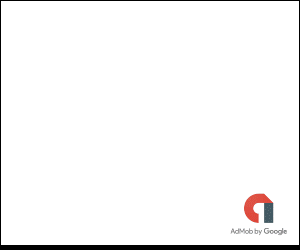Sir! I’d Like To Report A Bug! follows a QA tester on a quest to destroy bugs that have escaped into the real world after a new prototype tech goes crazy. This side-scrolling platform game was made by a three-man team who took a break from their own solo projects to come together and make this pixelated adventure. Ash Morgan, the man who worked on the design and coding of the game, talks about the experience.
It’s kind of hard to believe that a bunch of moving images and a bit of music coming from a thin lump of plastic and metal can fill you with such pride. It was a Thursday evening in late July, and I had just merged some newly-created art assets with a level I had built, and put in some music. It was that moment where Sir! I’d Like To Report A Bug! was no longer a prototype, but was now an actual game in development.

But I’m getting ahead of myself, let’s rewind to this past April.
One Crazy Idea
I’m one of those people who is always thinking up of something for a game, be it a character and their backstory, a neat little idea for a mechanic, or how one could advertise their creation. That’s why it was no surprise when I thought up the premise of a guy going to and from work while the world around him changed and glitched out like bugs in a game. Instead of just having a laugh about it and continuing my walk home, I actually started to concept how the game would look and play in my head. Later that evening, I had Unity loaded up on one screen and a tutorial on how to make a 2D platformer on the other.

I really don’t see myself in anyway as a programmer or coder, I can’t draw to save my life, and a cat can compose better music then me. This was just a bit of an experiment to see if I could actually make something, and if that something could be fun. After a few evenings of tinkering, I had a prototype on my tablet. It was nothing fancy, just a side-scroller with basic controls and some ideas I had for bugs scattered throughout some levels. Everything was basic, and the character on screen was a Mario sprite I “borrowed” from the Internet, but it was a fun few minutes of jumping and laughing at the weirdness that appeared on screen.
A few more evenings went by and I had created more. It got me thinking, “I just got a Unity license for Android, and I know about getting apps onto Google Play. Why not turn this into something and see what happens?“
Dev Team Assemble!!
As I mentioned before, I’m useless at most parts of game development. If I was going to turn this into something people could actually download and play, I would need some talent. Thankfully, I knew a bunch of talented people thanks to my days at University. After a few emails, I was able to rope in the very talented Matthew Calvert and Adam Grant. We didn’t want to spend ages talking and debating about what kind of studio we would be and how we would market ourselves. We just wanted to focus on the task at hand and make something fun.

With new blood came new ideas for levels and bugs, so we got to work coding, mixing and drawing. Production boiled down mainly to myself prototyping an idea someone came up with, Adam doing a few tester assets, and then all three of us looking at if it worked or not via nightly builds. We didn’t focus on team meetings and using fancy progress tracking software. Instead, we just shouted at each other via Facebook or texts. That makes it sound like it was an unorganized mess (and to some degree, it was), but it worked for us. We rarely wasted time due to lack of communication, and everyone knew what they were doing. If anyone had an idea, we were quick to make a prototype and try it out.
Hold On Chaps, We’ve Got a Problem
It’s a commonly unwritten rule in game development that something will blow up badly. The longer nothing goes wrong, the bigger the problem, and yes, it happened to us.
It was just after I had that moment of pride where our game no longer seemed like a crazy idea and seemed like an actual game. Level layouts were done and all the bugs were working to a degree. Some music was missing, and there were no animations, but we had a beta to test and work upon. I decided to play the game from start to finish and record what defects I ran into, so that I could get to work fixing them the next day. There was just one problem though — I had finished all ten levels of the game in less than 15 minutes!
The game had no challenge. I had died a few times on the later levels, but was still able to blitz through at break-neck speed. You could argue that because I had designed the levels, I had a huge advantage, but after letting my brother play, I could tell the game was too short. We spent ages thinking up new ideas and levels, but they just didn’t feel right. We had worked hard on what we had, and now it felt like we were bolting on content just because we had to.
Then came a crazy idea – let’s make the game as hard as retro games from the 80s and 90s! We swapped out a few assets to make the game look more pixelated and tweaked the difficulty. What followed was an afternoon of swearing and raging, but the game was still fun, and it took us a lot longer to beat. We decided it was our hook: a retro-looking game with a retro difficulty to boot!
And Now For Something Completely Different
The game was nearing completion, and we started thinking about how we were going to sell it. I had seen the horrors of new studios charging, so we wanted to stay away from charging, and we couldn’t bolt on in-app purchasing, as there was nothing to buy in-game. We were stuck with either offering a donation version of the game or just offering it for free.
We were ok with giving away the game, as we weren’t really in it for the money, but at the same time, we wanted some kind of reward for our efforts and to start building up some capital for future ideas. It was here we pondered about combining the concepts of donating with crowdfunding, and thus our system of “Post-Crowdfunding” was born.
We wanted to reward players that believed in us, as well as build a sense of community around the game, so we started to plan additional content and offer it if we hit certain funding goals, much like the stretch goals on KickStarter. The system was quite basic, as it was just a link from the app that pointed to a PayPal page where players could donate, but we were excited at the fact that no one had ever tried this before. If it actually works or not remains to be seen, but we have hope in our players and the future of our little creation.


If you would like to find participate in the Post-Crowdfunding, check out their website, and find out more about the game through their Facebook.

Comments










